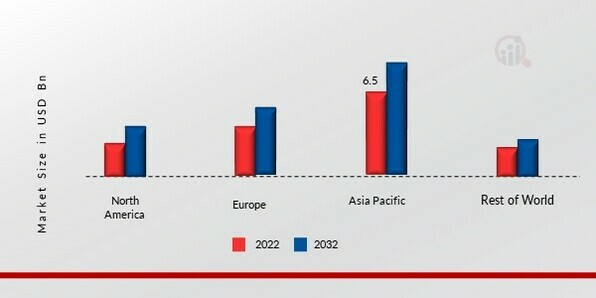Atmospheric & Specialty Gases
Photoresist Chemicals
Wet Chemicals and Solvents
Others
Integrated Circuits And Semiconductor
Flat Panel Displays & Light Emitting Diodes
Photovoltaic
Printed Circuit Boards
Others
North America Electronic Chemicals by Product TypeAtmospheric & Specialty Gases
Photoresist Chemicals
Wet Chemicals and Solvents
Others
North America Electronic Chemicals by ApplicationsIntegrated Circuits And Semiconductor
Flat Panel Displays & Light Emitting Diodes
Photovoltaic
Printed Circuit Boards
Others
US Electronic Chemicals by Product TypeAtmospheric & Specialty Gases
Photoresist Chemicals
Wet Chemicals and Solvents
Others
US Electronic Chemicals by ApplicationsIntegrated Circuits And Semiconductor
Flat Panel Displays & Light Emitting Diodes
Photovoltaic
Printed Circuit Boards
Others
CANADA Electronic Chemicals by Product TypeAtmospheric & Specialty Gases
Photoresist Chemicals
Wet Chemicals and Solvents
Others
CANADA Electronic Chemicals by ApplicationsIntegrated Circuits And Semiconductor
Flat Panel Displays & Light Emitting Diodes
Photovoltaic
Printed Circuit Boards
Others
Europe Electronic Chemicals by Product TypeAtmospheric & Specialty Gases
Photoresist Chemicals
Wet Chemicals and Solvents
Others
Europe Electronic Chemicals by ApplicationsIntegrated Circuits And Semiconductor
Flat Panel Displays & Light Emitting Diodes
Photovoltaic
Printed Circuit Boards
Others
Germany Outlook (USD Billion, 2018-2032)
Germany Electronic Chemicals by Product TypeAtmospheric & Specialty Gases
Photoresist Chemicals
Wet Chemicals and Solvents
Others
Germany Electronic Chemicals by ApplicationsIntegrated Circuits And Semiconductor
Flat Panel Displays & Light Emitting Diodes
Photovoltaic
Printed Circuit Boards
Others
France Electronic Chemicals by Product TypeAtmospheric & Specialty Gases
Photoresist Chemicals
Wet Chemicals and Solvents
Others
France Electronic Chemicals by ApplicationsIntegrated Circuits And Semiconductor
Flat Panel Displays & Light Emitting Diodes
Photovoltaic
Printed Circuit Boards
Others
UK Electronic Chemicals by Product TypeAtmospheric & Specialty Gases
Photoresist Chemicals
Wet Chemicals and Solvents
Others
UK Electronic Chemicals by ApplicationsIntegrated Circuits And Semiconductor
Flat Panel Displays & Light Emitting Diodes
Photovoltaic
Printed Circuit Boards
Others
ITALY Electronic Chemicals by Product TypeAtmospheric & Specialty Gases
Photoresist Chemicals
Wet Chemicals and Solvents
Others
ITALY Electronic Chemicals by ApplicationsIntegrated Circuits And Semiconductor
Flat Panel Displays & Light Emitting Diodes
Photovoltaic
Printed Circuit Boards
Others
Spain Electronic Chemicals by Product TypeAtmospheric & Specialty Gases
Photoresist Chemicals
Wet Chemicals and Solvents
Others
Spain Electronic Chemicals by ApplicationsIntegrated Circuits And Semiconductor
Flat Panel Displays & Light Emitting Diodes
Photovoltaic
Printed Circuit Boards
Others
Rest Of Europe Electronic Chemicals by Product TypeAtmospheric & Specialty Gases
Photoresist Chemicals
Wet Chemicals and Solvents
Others
REST OF EUROPE Electronic Chemicals by ApplicationsIntegrated Circuits And Semiconductor
Flat Panel Displays & Light Emitting Diodes
Photovoltaic
Printed Circuit Boards
Others
Asia-Pacific Electronic Chemicals by Product TypeAtmospheric & Specialty Gases
Photoresist Chemicals
Wet Chemicals and Solvents
Others
Asia-Pacific Electronic Chemicals by ApplicationsIntegrated Circuits And Semiconductor
Flat Panel Displays & Light Emitting Diodes
Photovoltaic
Printed Circuit Boards
Others
China Electronic Chemicals by Product TypeAtmospheric & Specialty Gases
Photoresist Chemicals
Wet Chemicals and Solvents
Others
China Electronic Chemicals by ApplicationsIntegrated Circuits And Semiconductor
Flat Panel Displays & Light Emitting Diodes
Photovoltaic
Printed Circuit Boards
Others
Japan Electronic Chemicals by Product TypeAtmospheric & Specialty Gases
Photoresist Chemicals
Wet Chemicals and Solvents
Others
Japan Electronic Chemicals by ApplicationsIntegrated Circuits And Semiconductor
Flat Panel Displays & Light Emitting Diodes
Photovoltaic
Printed Circuit Boards
Others
India Electronic Chemicals by Product TypeAtmospheric & Specialty Gases
Photoresist Chemicals
Wet Chemicals and Solvents
Others
India Electronic Chemicals by ApplicationsIntegrated Circuits And Semiconductor
Flat Panel Displays & Light Emitting Diodes
Photovoltaic
Printed Circuit Boards
Others
Australia Electronic Chemicals by Product TypeAtmospheric & Specialty Gases
Photoresist Chemicals
Wet Chemicals and Solvents
Others
Australia Electronic Chemicals by ApplicationsIntegrated Circuits And Semiconductor
Flat Panel Displays & Light Emitting Diodes
Photovoltaic
Printed Circuit Boards
Others
Rest of Asia-Pacific Electronic Chemicals by Product TypeAtmospheric & Specialty Gases
Photoresist Chemicals
Wet Chemicals and Solvents
Others
Rest of Asia-Pacific Electronic Chemicals by ApplicationsIntegrated Circuits And Semiconductor
Flat Panel Displays & Light Emitting Diodes
Photovoltaic
Printed Circuit Boards
Others
Rest of the World Electronic Chemicals by Product TypeAtmospheric & Specialty Gases
Photoresist Chemicals
Wet Chemicals and Solvents
Others
Rest of the World Electronic Chemicals by ApplicationsIntegrated Circuits And Semiconductor
Flat Panel Displays & Light Emitting Diodes
Photovoltaic
Printed Circuit Boards
Others
Middle East Electronic Chemicals by Product TypeAtmospheric & Specialty Gases
Photoresist Chemicals
Wet Chemicals and Solvents
Others
Middle East Electronic Chemicals by ApplicationsIntegrated Circuits And Semiconductor
Flat Panel Displays & Light Emitting Diodes
Photovoltaic
Printed Circuit Boards
Others
Africa Electronic Chemicals by Product TypeAtmospheric & Specialty Gases
Photoresist Chemicals
Wet Chemicals and Solvents
Others
Africa Electronic Chemicals by ApplicationsIntegrated Circuits And Semiconductor
Flat Panel Displays & Light Emitting Diodes
Photovoltaic
Printed Circuit Boards
Others
Latin America Electronic Chemicals by Product TypeAtmospheric & Specialty Gases
Photoresist Chemicals
Wet Chemicals and Solvents
Others
Latin America Electronic Chemicals by ApplicationsIntegrated Circuits And Semiconductor
Flat Panel Displays & Light Emitting Diodes
Photovoltaic
Printed Circuit Boards
Others










Leave a Comment